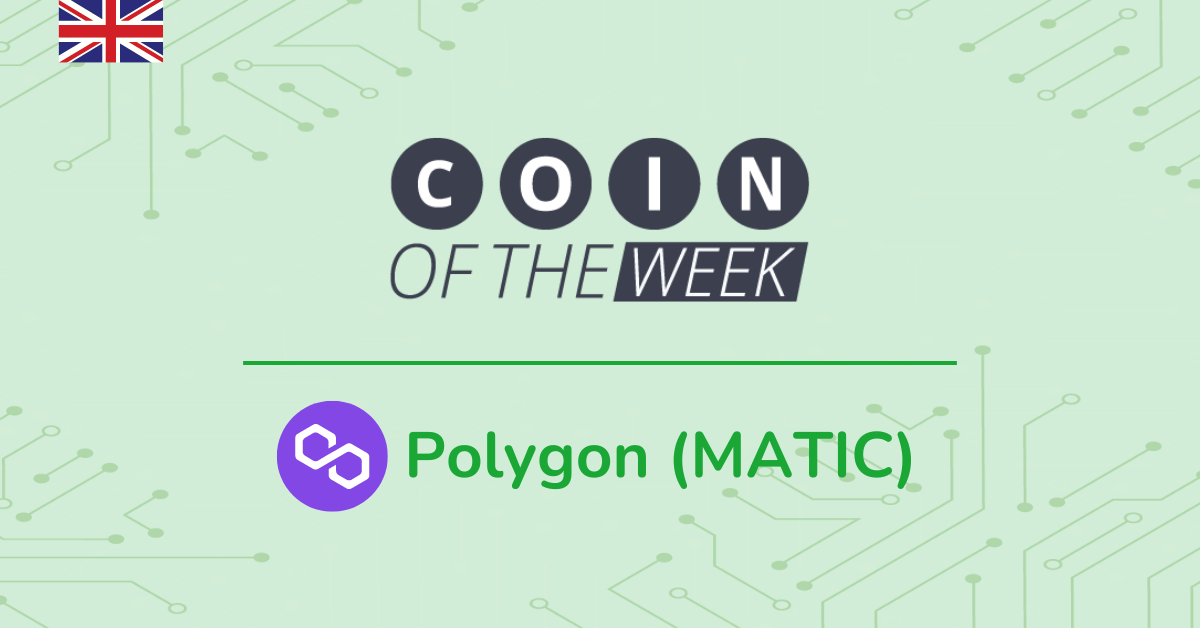Polygon (MATIC) - Coin of the Week

Polygon (MATIC) is a scalable open-source blockchain platform for decentralized applications (dApps). Since 2017, the platform has evolved from a scaling system of the Ethereum network to a complete platform with multiple functions. The project aims to improve the user experience by eliminating scalability problems and increasing the speed of blockchain transactions.
Polygon technology uses an L2 (level 2) architecture to improve Ethereum performance, without changing the basic structure of Ethereum. With the help of layer 2 technology, Polygon can handle more transactions per second (TPS) and reduce transaction fees.
History of Polygon
The Polygon (MATIC) project was developed in 2017 by entrepreneurs involved in the Ethereum project: Jaynti Kanani, Sandeep Nailwal, Anurag Arjun and Mihailo Bjelic. In a funding round from April 2019, the MATIC team raised 5.6 million USD in Ethereum, in a span of only 20 days.
Matic Network went into operation in 2020 and attracted top names from the world of decentralized finance (DeFi), such as Decentraland (MANA). Matic Network was renamed Polygon in 2021. After the rebranding, Polygon kept its cryptocurrency MATIC, the digital currency that is the basis of the network. MATIC is used as a payment unit in the Polygon ecosystem.
How does Polygon work?
Polygon is a blockchain platform that aims to scale the Ethereum project, with the help of a multitude of secondary networks (sidechains), which seek to make the main platform more efficient. Sidechain networks are unique, linked to the main blockchain network and effective in supporting many decentralized finance (DeFi) protocols.
At the base of the Polygon network is a series of software programs, which are used to build decentralized applications (dApps) compatible with Ethereum.
The Polygon network operates based on a Proof-of-Stake (PoS) consensus protocol, which allows users to block MATIC units to support the network and for the chance to generate passive income.
Polygon use-cases
· Decentralized Finance (DeFi)
· Blockchain based games
· The NFT market
· Integration of blockchain networks
For more information about MATIC, go to the Polygon Price (MATIC) page.
Polygon advantages
· Network scalability
· Support for decentralized applications (dApps)
· Network interoperability
For more information about MATIC, go to the Polygon Price (MATIC) page.
Polygon in 2023
The Polygon team explained at the beginning of the year that the project will focus on the NFT ecosystem in 2023. Sandeep Nailwal, one of the founders of the project explained that the change in focus comes due to the impressive number of NFT collections that migrated to the Polygon blockchain in 2022.
Financial Indicators
Market Cap: 11 billion EURO
Polygon price today: 1.2 EURO
Polygon trading volume: 436 million EURO
Polygon Community
Latest Polygon News
· Traditional financial giant Mastercard has announced a program that will teach emerging artists how to use Web3 and Blockchain. The program is called Artist Accelerator and is developed in collaboration with Polygon.
· Two major digital art projects from the Solana NFT ecosystem, DeGods and Y00ts, have announced their move to the Polygon blockchain.
How to buy Polygon (MATIC)
On Tradesilvania you can buy and sell Polygon or other types of cryptocurrencies, such as Ethereum (ETH) and Solana (SOL). In our platform, you have the possibility to include Polygon units (MATIC) in the Savings service, through which you can generate passive income.